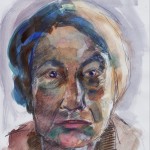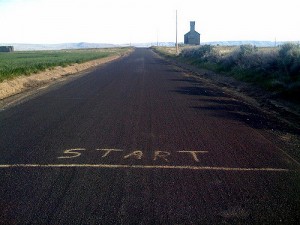
Powerful research can sometimes be conducted in quiet ways. This study of the rapes of older people that asked police force for data is one such example.
Rape of older people in the UK is a title that hints at the different perspectives that criminologists bring. They do not use the term ‘elder abuse’ or ‘sexual violence’ but the criminal offence term. This study provides unique data about reported crimes, with the authors acknowledging that victims are sometimes ‘invisible’.
Methods
Taking advantage of Freedom of Information Act 2000 provisions, the researchers asked UK police forces to tell them the numbers of reported rapes (including sexual assault by penetration) of people aged 60 and over in their areas. They chose a five year period to ask about and requested numbers and anonymised details such as the alleged victim/perpetrator relationship.
They analysed the information they received and set their findings in the context of other people’s research and theories from the fields of domestic violence studies, adult safeguarding and feminist criminology.
The reason for taking a Freedom of Information (FOI) approach was that crime statistics do not always collect data about older people on some subjects. For example, the national self-report victimisation survey, the Crime Survey for England and Wales, stops asking about intimate violence when respondents are aged 59 and over.
Bows and Westmarland provide a very useful summary of research about previous studies of the rape and sexual violence committed against older women that has been undertaken in the UK. Some of this has explored the impacts of such crimes on victims.

This new open access study is an excellent starting point for anyone looking to learn more about rape and sexual violence against older people.
Findings
The researchers set their findings in the context of a discussion about what has been termed ‘real rape’. This term is used to draw attention to stereotypes of rape victims, generally thought to be young women, raped by a stranger, at night. While several research studies have challenged this stereotype, Bows and Westmarland maintain that it persists and is often reinforced by selective media reporting. Indeed they comment that some police campaigns reflect and may even reinforce such stereotypes. The problem with the stereotype is that victims who do not fit its characteristics may not be believed and/or are reluctant to report the crime or pursue prosecution. For older people the persistence of the ‘real rape’ stereotype may feed in to ageist attitudes about older people and sexuality, and prolong myths that sexual violence generally takes place at night, outdoors, and is committed by strangers. The researchers also suggest that such myths may mean that other people miss the signs of sexual offences and victimisation.
Nonetheless Bows and Westmarland suggest that when sexual violence or rape is committed against older people it may be seen as part of a particular type of crime; one perpetrated against particularly frail or vulnerable older people and taking place in the context of other criminal activity such as burglary. Perpetrators are pathologised as ‘sick and corrupt.’ These incidents get widely reported by the media.
Responses to their FOI requests were almost complete; 45 out of the 46 police forces in the UK sent details of their statistics; and most were able or willing to reply in full to the questions. The researchers list 4 key findings from their FOI request responses:
- Around 130 reports are made to the police annually for rape and sexual assault of older victims;
- Most victims were female and most perpetrators were male;
- Most perpetrators were known to their victim;
- Most of the rapes and assaults were carried out in the victim’s home.
For those working in social care some specific points emerge:
- The term ‘unrelated carer’ is one of particular interest; of the 236 assaults reported that took place in the victim’s home (including care homes), 26 were reported to be carried out by unrelated carers;
- When it occurred in a victim’s home in the community (own home) the most likely perpetrator was an acquaintance or a partner;
- However not all assaults in care homes were by staff; some were carried out by visitors to the home or by other residents;
- Overall, 12% of the 541 assaults were carried out by unrelated carers;
- In respect of location, 21% of the 556 assaults were carried out in a care home, hospital or nursing home (figures don’t always tally as data collected differed by force and by classification).
There are some differences between older victims and national statistics covering other age groups:
- For example, national statistics report most perpetrators to be partners or former partners; this present study found the category of acquaintance was the most common relationship when the victim was an older person, followed by partner
- One other difference lies in the fact that most perpetrators were younger than their victims when the victim was an older person
- However, sexual violence is similarly gendered; the great majority of older victims are female (92%) and most perpetrators are male (although there is missing data as some offenders have not been charged).
The proportion of reported rape and sexual assault cases involving an older victim can now be established. Over the 5 years 2009-2013 in the UK there were 87,230 cases reported; in 655 of these cases the victim was aged 60 or over (0.75%). Of these, sexual assault by penetration was more than double the cases of rape.

0.75% of UK reported rape and sexual assault cases involved an older victim (aged 60 or over).
Strength and limitations
Like any police data, the statistics reported are limited to recorded offences and in the area of sexual violence there is major under-reporting. Bows and Westmarland observe that only about 15% of such offences get reported overall. Police forces tend to keep their records in different ways. Nonetheless this is new data; it adds hugely to our knowledge of crime and has great relevance to those working in adult safeguarding.
Summary
As mentioned above, one focus of this paper was to explore the stereotypes of ‘real rape’. The researchers argue that the statistics they have collected show that rape against older people is similar to that taking place in other age groups. Media attention to ‘opportunist rape’ of older people as part of burglaries and by young offenders does not generally mention that this type of incident is far less common than that occurring in situations of domestic violence. However they draw attention to the distinctive patterns that the statistics reveal: 1) age differences in victim and perpetrator and 2) the carrying out of such offences in care homes and other ‘caring’ locations. Social care and safeguarding communities need to address this subject as a whole, in prevention, response, and rights to justice.

The media portrayal of rape offences of older people does not paint a complete picture of the crime.
Links
Primary paper
Bows H, Westmarland N. (2015) Rape of Older People In The United Kingdom: Challenging The ‘Real Rape’ Stereotype. Br J Criminol first published online November 24, 2015 doi:10.1093/bjc/azv116

“Powerful research can sometimes be conducted in quiet ways” @scwru Prof Jill Manthorpe: Rape of older people https://t.co/8YM9aRegJA
Hi @Hannah_Bows We’ve blogged about your excellent Challenging The ‘Real Rape’ Stereotype paper https://t.co/8YM9aRegJA @scwru
@SocialCareElf @scwru wow thank you very much this is a great post! Looking forward to reading comments too! @Nwestmarland
@Hannah_Bows just had a quick read and passing it on, excellent study @SocialCareElf @scwru @Nwestmarland
@NatashaSmasha @SocialCareElf @scwru @Nwestmarland thank you very much Natasha :)
@Hannah_Bows @NatashaSmasha @SocialCareElf @scwru thanks Natasha!
@SocialCareElf @Hannah_Bows @scwru this is great thanks for letting us know!
Rape of older people: challenging the ‘Real Rape’ stereotype – @JillManthorpe reviews a new article https://t.co/BPT09RdiyJ
Hi @Hannah_Bows @Nwestmarland What were your take-home messages from your (Rape of Older People) study? https://t.co/8YM9aRegJA
@SocialCareElf @Nwestmarland For me, that rape involving older ppl shares many similarities with younger ppl, but also important differences
@SocialCareElf @Nwestmarland Perpetrators being younger & care homes as 2nd most common location are examples of differences
@SocialCareElf @Nwestmarland & how narrow the persistent ‘real rape’ stereotypes are that mean SV involving older ppl is hidden
@Hannah_Bows @SocialCareElf definitely the one about stereotypes for me.
@Hannah_Bows @SocialCareElf also how much more research is needed given this only police reports.
@SocialCareElf @Hannah_Bows finally the need for care homes and older age charities and services to work more closely with rape charities.
The media portrayal of rape offences of older people does not paint a complete picture of the crime https://t.co/8YM9aRegJA
Vergewaltigungen von älteren Frauen in Großbritannien, systematisch untersucht.
Vergewaltigung trifft alle, wir… https://t.co/KSZ43qaVn6
Rape of older people: challenging the ‘Real Rape’ stereotype https://t.co/DrARKhNKca via @sharethis
Rape of older people: challenging the ‘Real Rape’ stereotype https://t.co/60dvp18eXp via @sharethis
Looking to learn more about rape and sexual violence against older people? Start here: https://t.co/8YM9aRegJA
Don’t miss @scwru blog on Rape of older people: challenging the ‘Real Rape’ stereotype https://t.co/8YM9aRegJA #EBP
Rape of older people: challenging the ‘Real Rape’ stereotype https://t.co/rbgq5fxrkS
Rape of older people: challenging the ‘Real Rape’ stereotype https://t.co/aSoMQujnUu via @sharethis
[…] 1Rape of older people: challenging the ‘Real Rape’ stereotype […]